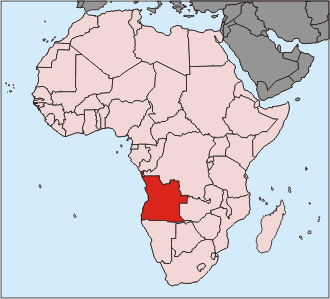The Angolan War of Independence (1961-1975)

FNLA training in Zaire. (Creative Commons photo. Attribution to author and info can be found here)
The Angolans ended up embracing revolt as a means of changing their 2nd class citizenship status under the Portuguese Colonial Act (1933). The Angolans were given some treatment that was favorable compared to other colonies, like allowing them to achieve government positions, loose intermarriage laws and solid colleges in the country, but the people tired of the poor treatment in other areas.
The people started with a boycott of the cotton industry where the Africans started to burn the ID cards they were forced to carry by the government. When the government cracked down on this movement it led rebel groups to attack violently from neighboring Congo, where they had been training. The rebels didn’t spare women or children in their attacks that killed 6 times as many Africans as they did Europeans. While the rebels were committing these acts, the Portuguese were bombing villages with napalm and killing just as many people, most of which being innocent civilians. For this reason, it was hard to pick as good guy in this war.
The US eventually started to pressure the Portuguese to leave the country due to its fears of the level of Soviet (USSR) involvement in this war. The hope was that if the Portuguese leave on their own, the country may choose not to move towards communism. On the other hand, if the war turned out to be a long, brutal struggle, it might push the people towards embracing communism more. The US even sent some people to help overthrow the Portuguese in the country at one point. Soon after this, the rebels attacked and massacred a bunch of Portuguese settlers, which caused the US to change its stance and support the Portuguese instead. In the end, the
Portuguese had too much firepower for the rebels and were able to calm the fighting to small guerrilla tactic battles by the time of the Carnation Revolution.

Location of Angola on an African map. (Creative Commons photo. Attribution to author and info can be found here)
